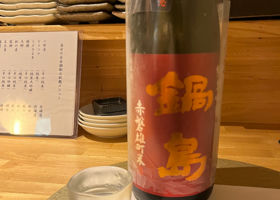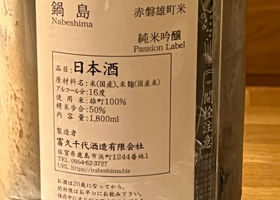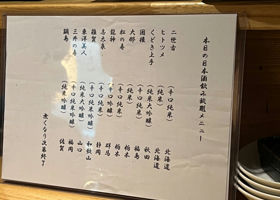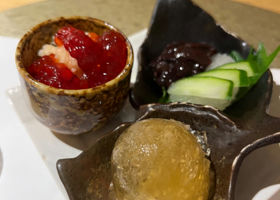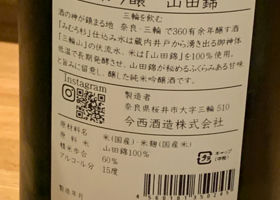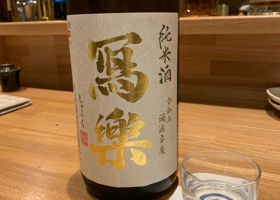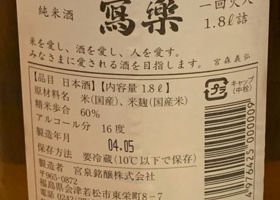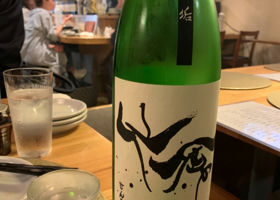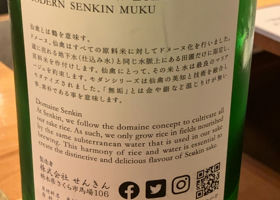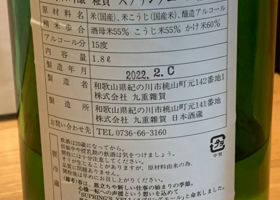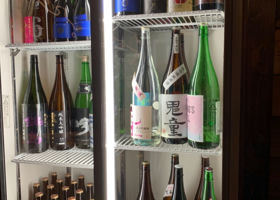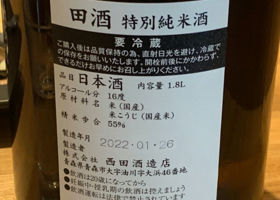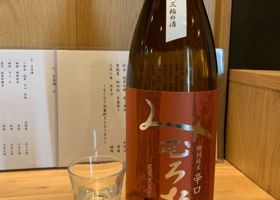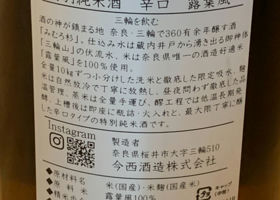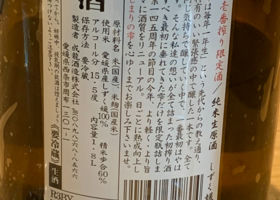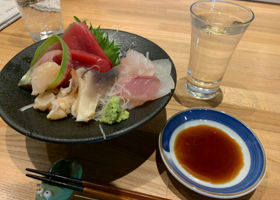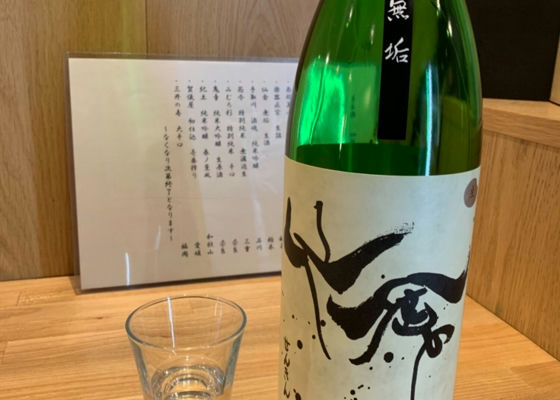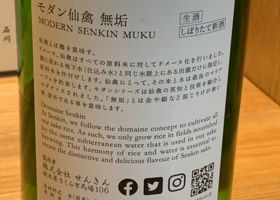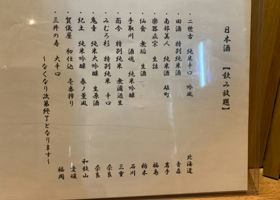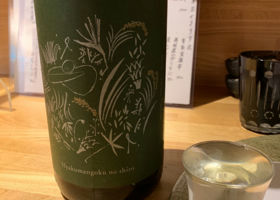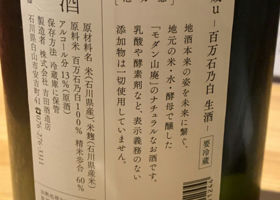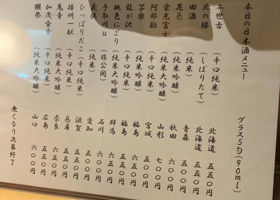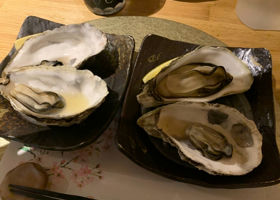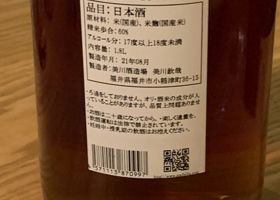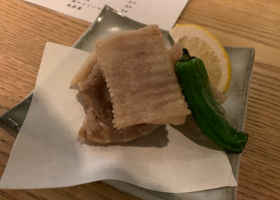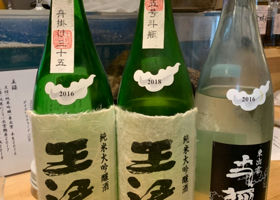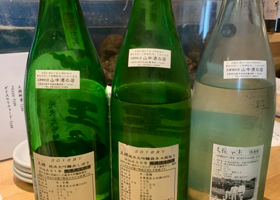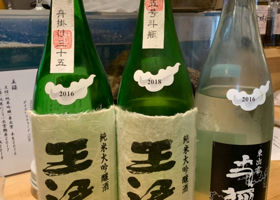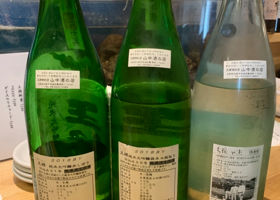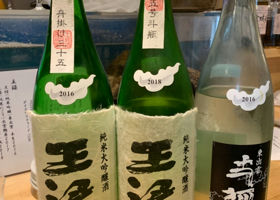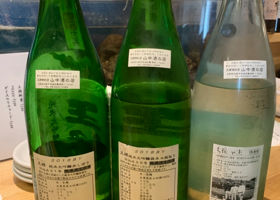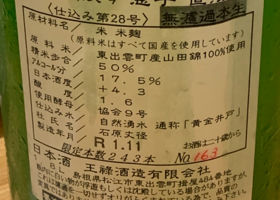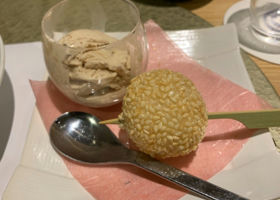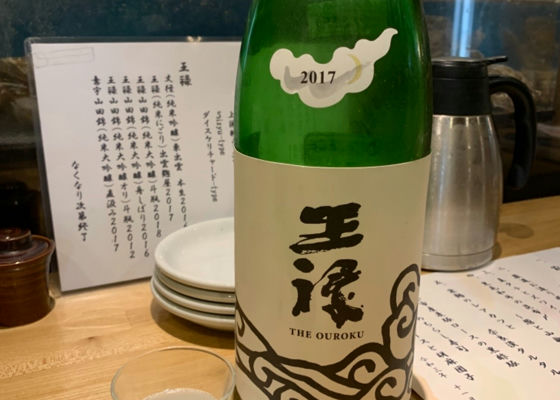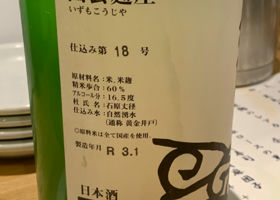Timeline
しんしんSYThe day after our recent off-line meeting in Fukuoka, we were able to have a solo visit to Sapporo to have some sake!
Nabeshima for all-you-can-drink!
What do you think will be served, what do you think will be served?
This is what came out!
A very good sake to start with!
Delicious, delicious!
Now, how much can you drink in the limited time?
extensive knowledge
This sake has a full, rich aroma and a juicy, sweet taste. You can fully enjoy the unique flavor of Omachi. MAJGood evening, Shinshin SY! I'm so glad to see you here 😄!
👍 しんしんSYGood morning, MAJ 😃That's a great lineup for all you can drink. I drink some brands I've never had before. 遥瑛チチGood morning, Shinshin SY 😃.
I am very impressed that you are running for the branch manager even though you are not a roadie 🙇.
Please hold an offline meeting ❗️.
I'm also feeling like I want to join in other chapters' offline meetings 😁.... しんしんSYGood morning, Haruei Chichi. It's not that big of a deal. It's just that I wanted to invite you to enjoy good drinks and food with a few people from SAKEWA. 4-5,000 yen includes all you can drink, so please come and join us in Sapporo🍶. 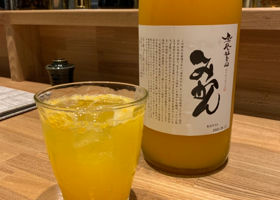
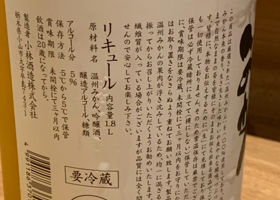
しんしんSYThanks to the store that has oranges, yuzu, and plums in addition to Houou Mida peaches 🥲.
I got some mandarin oranges!
You can taste the sensation of the mikan's mash!
Isn't it nice to enjoy this kind of sake once in a while?
I was informed that the sake I had reserved for the weekend, ◯◯◯ Hanpukai, is now in stock.
I'm going to go get it today!
I'll try it first tonight.
I'm planning to bring it to the Fukuoka meeting (it's by mail)
extensive knowledge
This time, it is a very thick liqueur, also made from 100% Onshu mandarins, which are said to originate in Japan. As you can see from the pics, the mandarin oranges have a deep orange color! It must contain a considerable amount of fruit. In addition, this liqueur contains more than 10% of a pulpy part called sajyo. The texture of the pulpy pulp and the refreshing tartness of the mandarin oranges, and since no more sugar is added than necessary, you can directly feel the sweetness of the mandarin oranges. 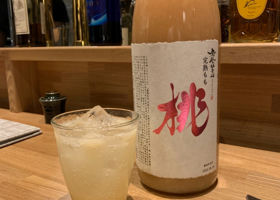
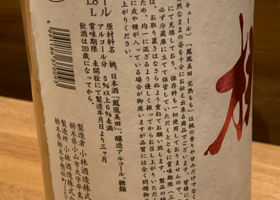
しんしんSYThis restaurant's all-you-can-drink policy includes a good selection of shochu!
There was also Kenpachi, but there were a couple of other drinks that caught my attention!
The liqueurs were Houou Mita Peach and Mikan 🍊!
First of all, I had the peach mixed with soda!
The peach pulp is very well contained.
This kind of drink is good sometimes!
Knowledge
The Hououmida liqueur series is known for its high quality. Among them, "Hououmida Fully Ripe Momo" is one of the most popular. This liqueur is a "completely new peach liqueur" produced using patented technology. It is a cutting-edge liqueur that solves the problems of deterioration and fading of fresh taste, aroma, and color that are generally lost in the process of processing fruits.
Using a patented method, peaches are liquefied without damaging their cells by breaking them apart one by one, rather than physically crushing or soaking them. Therefore, you can enjoy the very fresh peach flavor in its entirety. 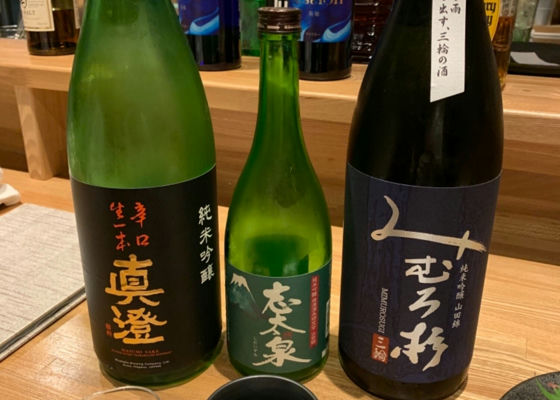
しんしんSYWhen I asked for Mimuro cedar, I was told to take these along with it.
I'll introduce them next.
Shifted to Junmai Ginjo from this area.
I like Nara's sake too, basically!
I can't get enough of this indescribable fruity taste!
extensive knowledge
The brewery is located in Miwa, where the oldest shrine in Japan, Ojinsha, where the god of sake resides, Miwasan, the sacred mountain of Ojinsha, and Katsunichi Shrine, where the oldest toji (master brewer) in Japan is enshrined. The gods, Miwa, and sake have been deeply connected since ancient times. The brewery has been in existence for over 350 years, and is currently supported by young brewer Masayuki Imanishi and his young staff, whose average age is in their 20's. The goal is to create the first sake brewed in Japan. The goal is not to create a strange taste for sake brewed in the birthplace of sake brewing, but rather to create a royal taste that everyone can enjoy. The sake is brewed with rice grown in cooperation with local Miwa farmers and water from Mt. Miwa, which is also known as "water of the gods. Delicious! We are committed to brewing sake with a serious and sincere attitude, doing everything we can to make it delicious for our customers. しんしんSYNext to another great sake
Collage
You can't go wrong with this one.
Fruity and my favorite flavor!
Enjoy the food and drinks!
This time we were allowed to share a seat at the counter when the place was full!
Thank you very much!
knowledge
When you pour it into the glass, you are gently greeted with a mild fruit aroma. When you drink it, you can taste juicy fruitiness like white peach and muscat, but it is not at all harsh because it is accompanied by a refreshing coolness. It has a very satisfying yet mild mouthfeel and flows smoothly down the throat, so it is an excellent sake that will leave you wanting another glass and another. It is a perfect sake for a mealtime drink. しんしんSYLet's go fruity for tonight's auras!
SENKIN MISAKI
Modern SENKIN MIKIKURI
Ginjo aroma as expected, we closed with a fruity...
Unusually, the hands of the clock were turning quite a bit!
(( _ _ )). .zzzZZZ
knowledge
Like a comfortable white T-shirt, something that exists comfortably in your daily life.
This is what SENKYO proposes as "Modern SENKYO Mukun," a sake for everyday use.
The word "mukun" means "purity" or "simplicity" without any mixture of gold or silver.
In other words, the gold and silver in Sentori are "Kame-no-o" and "Omachi," while the simple standard is "Mujin.
The simple standard is "innocence". 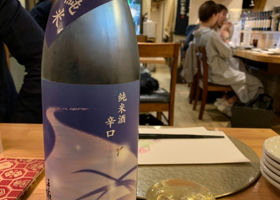
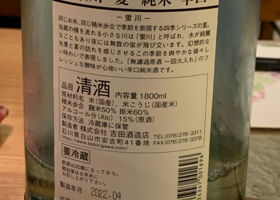
しんしんSYa rare opportunity to drink in a bar
Konakara-san to Torin-san
Oysters, tuna sashimi, and heshiko (pickled gizzard fish) at a bargain price
I will have summer sake again!
Beautiful label, blue for summer!
It starts off crisp and dry!
I think I can have some more as we are talking a lot 🍶.
the knowledge of the brewery
The summer version of the Junmai Dry series, "I want you to taste the richness of Japan's four seasons through sake".
The summer version of the Four Seasons series, which expresses the seasons with the same rice and the same rice polishing ratio!
-The small river that runs next to the brewery is called "Hotarugawa," and countless fireflies fly over it at night due to its clean water. This fantastic scene and the arrival of summer are expressed with a refreshing gasiness and freshness.
In order to preserve the freshness, the unfiltered, unfiltered, unfiltered sake has been bottle-fired once. The first sip is refreshing, but from the second sip, you can taste the deliciousness of the rice, and the flavor lingers on.
The deep aroma can be diluted if the sake is too cold, so a temperature range of 10-15° is recommended! Saika春 辛口吟醸 本生 スプリングエール純米吟醸生酒 しんしんSYFound a bottle not on the all-you-can-drink list.
Can I have this one too?
No problem, he said.
Light pink spring-like label
Spring Ale
Light, spring-like mouthfeel
Lately, this store has been collecting a lot of great sake and sometimes putting it in the all-you-can-drink section!
Let's come again!
extensive knowledge
Spring Ale" is a spring sake named with the idea of cheering for a fresh start at the beginning of a new journey or a new job.
The black cap is inspired by the knot of a necktie, and the shoulder paste is inspired by a necktie.
This dry ginjo-shu was brewed in time for the gradually warming season. It has a moderate ginjo aroma and is gentle and crisp on the palate. 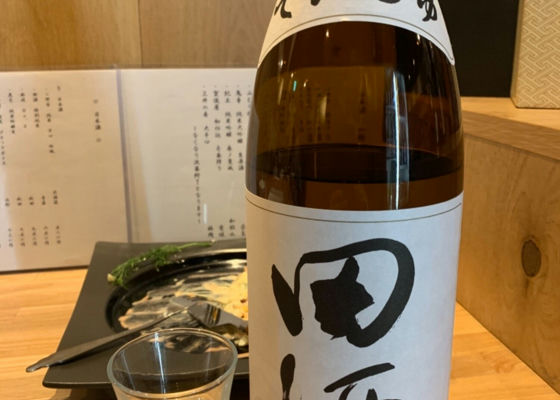
しんしんSYThe all-you-can-drink deal of the day included a variety of famous drinks!
I thought I would have had it just in time, but it seems to have been gone by a touch!
Tetorigawa, Sake Spirit, too.
So I asked for Tasake.
I've had the special junmai sake several times, and I could taste the apple🍎 flavor!
There are still some brands I haven't had yet, so let's drink some more 🍶.
Fried rice with duck and lettuce is here.
extensive knowledge
The top aroma is subtle, yet muscat-like. The full-bodied umami and sweetness are pleasant, reminding one of a beautiful ginjo type of sake without the weight. It is a Junmai-shu with a full flavor and breadth, yet it has a nice sharpness that keeps you from getting tired of drinking it.
Ingredient Rice:Hanabukiyuki
Sake degree: +3
Acidity: 1.5
Alcohol content: 15.5%.
Place of Origin:Aomori Prefecture, Nishida Shuzo ゆう🎶Congratulations to Shinshin SY on your 1300 check-in 🎊🎉㊗️ I reread your comment and now I understand what you mean (too late) 😅 You were 1200 at the end of January, right? 😳 100‼️ in less than 2 months is too much 🤩. しんしんSYYu🎶, good evening @ Kushiro. Thank you very much. I drink outside and drink in a glass or a sake cup, so I am embarrassed to be compared to you who drink from a 1.5 liter bottle or a 4.5 liter bottle. しんしんSYJapanese cedar (Cryptomeria japonica)
There was also a Roman series
Please do.
It's labeled "dry.
Similar to the first three drinks, but lighter and more swishy than fruity.
Almost at the turn
Sake Relay Race
More to come!
extensive knowledge
Imanishi Shuzo, which has a 350-year history, has started a new experiment starting from 24BY. The limited distribution "Romain Series" uses Nara Prefecture's famous "Rohafu" sake rice, and is a special junmai, ultra-harsh type that has been fire-quenched.
The slight scent of ginjo aroma, clean acidity, and smooth, smooth mouthfeel bring out more of the fresh flavor. The refreshing aftertaste is suitable not only for pairing with meals, but also for enjoying sake alone. A standard dry sake among Mimuro Sugi's [Romain Series]! It is a wonderfully well-balanced sake with a pleasant mouthfeel rather than a noticeably spicy flavor. 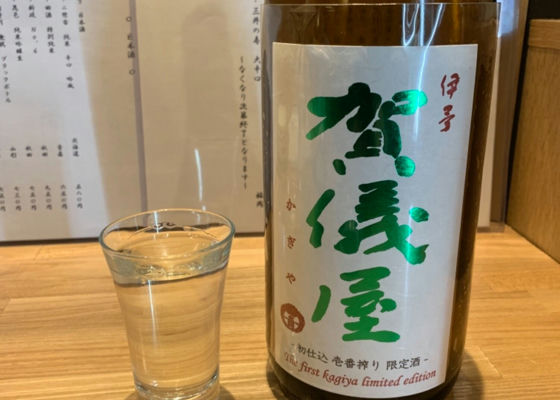
しんしんSYSashimi finally arrived!
For sake, I asked for a famous sake from Ehime Prefecture, where I used to work.
On the fourth glass, the most fruity sake appeared!
I had asked the waiter to limit it to about 2/3 of a glass because I drink a lot of different kinds of alcohol, but the waiter poured this one in a very generous amount!
Correct.
It goes very well with fresh sashimi.
I'm sure I'll be back when I discover Kagiya!
extensive knowledge
Refreshing aroma and unique acidity. Until now, the sake has been made with this characteristic at the forefront for nearly 10 years since its release, but in 2022 it has undergone a major renewal in order to face the ever-changing food culture and tastes.
While maintaining the "acidity" that has been the greatest characteristic of the previous Ichi, two new brewing concepts, "umami" and "lightness," have been added to the R3BY.
From the previous Ichi to the Ichi that goes one step further.
It was brewed with the aim of creating a cup that can be easily shared with a meal, and has become even easier to drink.
Ingredients: rice, rice malt
Alcohol Content: 15.5
Acidity: 1.7
Sake Degree: -2
Rice used: Ehime Shizuku Ehime
Polishing ratio: 60
Date of shipment: February 2022
Provenance / Sake Brewer : Seiryu Shuzo, Saijo, Ehime, Japan しんしんSYAll you can drink tonight!
We started with Modern Sentori
This is my first time.
I thought it would be more fruity since it is Yamada-Nishiki, but it is surprisingly light.
I feel a great sense of transparency.
I'm glad we started light because we have some great sake coming up 🍶.
extensive knowledge
Originally, the word "mukonin" meant unadulterated gold or silver, pure and unadulterated, and simple.
In the case of Senkyoku, gold and silver are Kamenoo and Omachi, and the simple standard is "mukun".
Modern Sentori Mukunin" is a year-round product of Sentori.
From 28BY, it has been further upgraded!
All rice used is now "Domaine Sakura Yamadanishiki".
The brewery has concentrated on the design and brewing process more intensively than before, such as extending the koji making time and the number of days in the brewer's cellar.
しんしんSYThis bottle was sparkling in the cold storage when I entered the store.
Ask for it in your next order.
freshly opened
The pink sake poured 🍶.
Excellent mouthfeel
Goes well with red tuna sashimi.
10% alcohol by volume, so be careful not to drink too much!
extensive knowledge
Nigori sake brewed with red yeast. The cute, milky pink color makes it look like a liqueur, but it is sake brewed only with rice and malted rice. No coloring agents are used.
The taste is sweet and acidic, like a strawberry yogurt smoothie. It tastes just like it looks, just like a strawberry yogurt smoothie. しんしんSYI haven't been to Torin-san since Shinsei & Oroku drinking comparison.
It's been a long time since I visited here.
I'm drinking alone, so there is no all-you-can-drink policy.
I found a bottle I was interested in!
Yoshida Kurau which was introduced in danchyu!
Hyakumangoku No Shiro Nama Sake
It was my first time to drink it!
Slightly effervescent!
The aroma is not so strong, but it is very smooth to drink.
It has a low alcohol content of 13 degrees, so it is very easy to drink!
I paired it with oysters (grilled and steamed).
Brief Sketch
Shiboritate Nama-zake" is only available from winter to spring.
Super fresh sake that is bottled immediately after pressing and shipped as it is! There may be some lees left in the bottle.
Hyakumangoku No Shiro
Hyakumangoku No Shiro" is one of the standard sake in this new series.
It is Ishikawa Prefecture's sake rice that made its debut in 2020. It is a new sake rice that is attracting the attention of many sake fans for its transparency and clear taste. With its unique minerality and clear taste, this sake is made in the same way as "Ishikawamon," another standard sake, but with the characteristics of the sake rice brought out well. The bottling process leaves the freshness of the sake in the bottle, which gives it a subtle bubbly taste. Maibijin山廃純米 酒粕再発酵酒 2021年醸造 MYVY(まいびー)純米 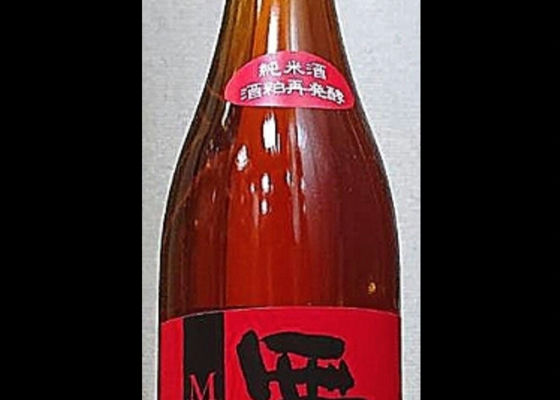
しんしんSYThe manager asked me if I would like to try something a little unusual, so I said yes, I would love to try something I've never had before.
Then, these three kinds were in front of me!
This color poured from a bottle!
I thought it was a noble sake!
As expected, the taste is very punchy!
We neutralize the strong taste with deep-fried kasube.
A lot of knowledge!
This is a popular sake that is almost sold out by reservation every year, and there are some people who wait for more than a year. It has a dark color, a sweet and sour taste, and a burnt bitterness, and it has an interesting taste like the sauce of mitarashi dango. We hope you enjoy it. MYVY is a sake made by letting sake lees rest and then pressing them again. We have received a lot of requests for this sake, but we have not been selling it at retail because it takes a long time to make and the quantity is very small. Finally, it is available for sale to the public. The taste of this sake is also very unique. It has a shocking taste. It is a harmony of richness and sweetness that is too rich. It can be enjoyed on the rocks, with soda (more sake), or warmed up. It can also be poured over vanilla ice cream as a dessert or used as a seasoning for cooking. しんしんSYThe drinks I couldn't drink at the all-you-can-drink Oroku, Part 3
Joujiki Blue Honsei
Yun Yun
We usually use Yamada Nishiki from Hyogo Prefecture for our "Oroku Kei", but as a first attempt, we brewed "Kei" with this "Higashi Izumo Yamada Nishiki" and the taste is close to "Oroku Jyojyo", so we decided to sell it as "Oroku Jyojyo Blue".
It has a nice roundness and a medium-bodied maturity. It has a refreshing Muscat-like flavor and a density of acidity.
However, in contrast to the usual Joujiki Genshu, the second half is more supple and smooth.
If you chill it too much, you won't be able to feel the roundness of the two-year aging process, so we recommend 10 degrees or more.
When warmed, the umami expands nicely, and the taut acidity harmonizes with the umami.
The fine acidity breaks off nicely. The roundness of the umami can be felt, but it has been aged at -5°C.
It keeps a beautiful elasticity. Oroku純米大吟醸 袋吊り 斗瓶取り 仕込み25号純米大吟醸原酒生酒袋吊り斗瓶取り無濾過 しんしんSYSake that I couldn't drink at Oroku all-you-can-drink party No.2
Junmai Daiginjo Fukurozuri Tobetori Oroku純米大吟醸 舟しぼり 仕込み31号 無濾過生原酒 舟掛け35純米大吟醸原酒生酒無濾過 しんしんSYThree kinds of Oroku that could not be drunk, No.1
Junmai Daiginjyo Funashibori Shizukomi 31 Unfinished Nama-shu Oroku純米大吟醸 意宇 無濾過本生 舟しぼり 直汲み 「意宇の春」純米大吟醸生酒無濾過 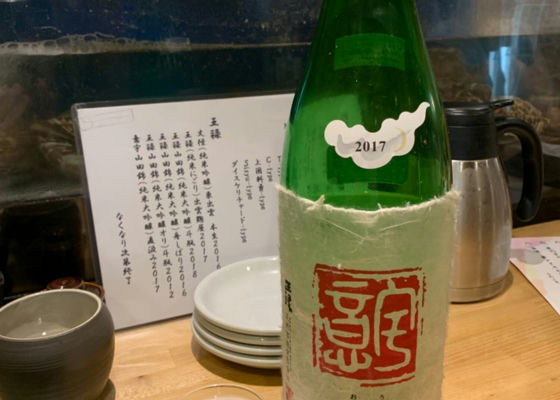
しんしんSYShinsei & Oroku's all-you-can-drink event
That's it for this night.
The last one is Junmai Daiginjo Ou
Limited edition of 243 bottles, NO.163
The label of the red letters on the white background is vivid and comfortable
We ended the night with a nigorizake.
I'll post it next, but I wanted to drink 3 more kinds of Ouroku.
I drank 24 kinds in Sendai, so when I saw the brands, I thought I might be able to drink 18 kinds that I had never tried before. I made a glass of Naminami at the start (toast) and drank two glasses of the Oroku bottle.
Still, you don't usually get the chance to drink so many rare drinks, so we had a really fun evening with the other guests.
Skepticism
The origin of the name of the sake is that in the myth of Izumo Kunihiki, at the moment when Kuninushi Yatsuka Mizushimitsunomikoto created the country of Japan conceptually, he thrust out his staff and shouted "Oh! and shouted, "Oh! This sake is named after the idea of brewing sake that is rooted in this land where the gods gather, and is a Junmai Daiginjo that is aged for one to three years before being shipped.
Ingredients Rice, Rice malt
Rice used: Yamadanishiki
Rice polishing ratio 50%.
Sake degree +4.3
Acidity 1.6
Yeast used: MISHOP No.9
Brewing water: Natural spring water, commonly known as "golden well しんしんSYKing's stipend 3 items
Nigori petite refreshing type
I'll pair it with Anago Sushi.
I still have some more sake to drink, but I think it's time to finish it.
The manager introduced me to the couple next door, and we talked about the best places to drink in Sapporo, Shinsei and Oroku🌼
knowledge
Both koji and kake are made from Toyama's Gohyakumangoku. Junmai-shu is synonymous with effervescent nigori. It has a pleasant sweetness and the beautiful acidity characteristic of Oroku that bursts in the mouth. Kojiya is the name of the Ishihara family. It is named after the meaning of always focusing on the origins of the family as a merchant family and devoting oneself to sake brewing in a humble and simple manner. RecommendedContentsSectionView.title
